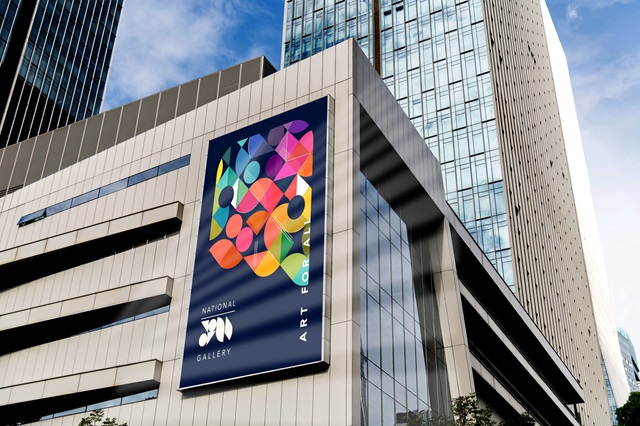
Visual communication is one of the most powerful ways to share ideas, evoke emotions, and build brand identity. From billboards and retail graphics to event backdrops and exhibition displays, print remains a cornerstone of how messages come to life. Yet, what truly defines modern visual communication is the materials behind it. Innovation in print substrates is revolutionizing how designers, marketers, and manufacturers bring visuals to the world, and forward-thinking suppliers are at the forefront of this transformation.
The Evolution of Print: From Function to Expression
Traditionally, printed materials were chosen for durability and cost-effectiveness, often with little consideration for texture, environmental impact, or tactile experience. Today, however, materials are being reimagined as an extension of the message itself. The choice of substrate now plays a vital role in defining tone, sustainability, and viewer engagement.
Whether it’s the softness of fabric signage, the resilience of mesh banners, or the vivid finish of backlit films, print materials have evolved from static mediums into dynamic storytelling tools. Designers are now free to think beyond the two-dimensional surface, using advanced textures, lighting, and movement to create immersive visual experiences.
Sustainability as a Core Innovation Driver
As global industries move toward greener practices, print technology has followed suit. The demand for environmentally friendly materials is reshaping production standards and pushing innovation forward. PVC-free substrates, recyclable fabrics, and water-based inks are becoming the new norm, reducing waste without compromising on quality or performance.
Manufacturers like Soyang Europe have been instrumental in this shift, offering a range of sustainable options that meet the growing need for responsible design. By focusing on recyclable and energy-efficient materials, they’re helping businesses lower their carbon footprint while maintaining the exceptional print quality that visual communication demands.
The Rise of Textiles in Visual Design
Soft signage has emerged as one of the most exciting developments in modern print materials. These fabric-based solutions offer a luxurious feel and a professional finish, making them ideal for high-end retail environments, exhibitions, and interior displays.
Textile materials also enhance light diffusion, giving printed visuals a softer, more organic look that resonates with audiences on an emotional level. Beyond aesthetics, they are lightweight, easy to transport, and reusable. These are benefits that appeal to brands seeking both impact and efficiency.
The result is a new era of tactile storytelling, where fabrics are used not just as a surface but as a sensory element that deepens brand connection.
Mesh, Vinyl Alternatives, and the Urban Canvas
In cities like London, Manchester, and Birmingham, outdoor advertising continues to dominate the skyline. Here, innovation in mesh and vinyl alternatives is creating more adaptable, weather-resistant, and visually dynamic displays.
Mesh materials, for example, allow air to pass through tiny perforations, making them ideal for large-format installations on buildings or scaffolding. They reduce wind resistance while maintaining sharp, vivid imagery. Meanwhile, PVC-free alternatives combine the durability of traditional materials with a lower environmental impact, giving advertisers the best of both worlds: strength and sustainability.
This evolution has also made urban branding safer and more compliant with environmental standards, proving that innovation can coexist with practicality.
Enhancing Printing Precision and Color Reproduction
Modern print materials are designed to work in harmony with advanced digital printing technologies. Improved coatings, stretch properties, and ink absorption capabilities allow for superior image precision and color consistency across large surfaces.
This technological synergy has opened up endless creative possibilities. Brands can now produce stunning displays with lifelike imagery, subtle gradients, and rich tones that were once difficult to achieve in outdoor or large-scale formats. These improvements make print a more versatile and reliable medium for modern communication campaigns.
Redefining the Experience Through Innovation
What sets innovative print materials apart is their ability to engage the senses. Texture, light reflection, and even movement can all influence how a viewer perceives a message. For example, backlit fabrics illuminate colors from within, creating a glow that captivates attention, while stretchable textiles can wrap around unconventional structures for fluid, modern installations.
This shift from static to experiential design is redefining how people interact with visual media. Print is no longer just something you look at. Instead, it’s something you feel, walk through, and experience as part of a larger story.
The Intersection of Technology and Creativity
Innovation in materials is also closely tied to digital progress. Advances in printing hardware, eco-inks, and automation have made it easier to experiment with new substrates without sacrificing efficiency. Designers can now produce prototypes quickly, test textures, and refine visuals in real time, accelerating creative development while reducing waste.
At the same time, software-driven color management ensures consistency across multiple materials, enabling campaigns to maintain visual coherence across everything from banners to wall graphics to window films.
Looking Ahead: The Future of Visual Communication
As sustainability, interactivity, and sensory design continue to evolve, print materials will remain central to how brands communicate. We can expect even more breakthroughs in biodegradable fabrics, reusable substrates, and hybrid materials that bridge the gap between physical and digital media.
Imagine banners that can change color with light, wall coverings that absorb sound while displaying imagery, or recyclable displays that leave no trace once campaigns end. The future of visual communication lies not just in what we print, but in how we print it and what message our materials send about innovation and responsibility.











